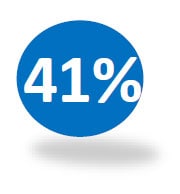Experts Collaborate to Develop a Standardized Syndrome Definition for Cold-related Illness
Collaboration

In winter, people are at risk for cold-related illness such as hypothermia. Deaths coded as weather-related from 2006 through 2010 showed exposure to excessive cold as the leading cause of weather-related deaths in the United States.1
The National Syndromic Surveillance Program Community of Practice worked with the Council of State and Territorial Epidemiologists to create a standardized cold-related illness syndrome definition. The findings provide situational awareness that is used to characterize affected populations; guide allocation of resources, supplies, or hospital staff; develop targeted messages (winter storm travel, outdoor safety, and power outages); identify information dissemination channels; and develop winter weather toolkits, such as those used in Kansas and Wisconsin.
The exchange of knowledge and experience through this collaboration developed the Cold-related Illness Query: Guidance for Implementing Cold-related Illness Syndromic Surveillance in Public Health Practice, which has been shared nationally and internationally. Funding from the National Syndromic Surveillance Program supports the use of syndromic surveillance in improving the nation’s public health.
1 Berko J, Ingram DD, Saha S, Parker JD. Deaths Attributed to Heat, Cold, and Other Weather Events in the United States, 2006–2010. National Health Statistics Reports. 2014;76:1–15.
Public Health Problem
In winter, people are at risk for cold-related illness (CRI) such as hypothermia. Deaths coded as weather-related from 2006 through 2010 showed exposure to excessive cold as the leading cause of weather-related deaths in the United States.1 Therefore, the National Syndromic Surveillance Program Community of Practice (NSSP–CoP) worked with the Council of State and Territorial Epidemiologists (CSTE) to create a standardized cold-related illness syndrome definition.
Actions Taken
Council of State and Territorial Epidemiologists 2015 Member Assessment


In 2017, CSTE’s Climate, Health, and Equity Subcommittee convened a workgroup to create a CRI query definition and implementation guidance. The workgroup collaborated with data analysts and epidemiologists from the NSSP–CoP Syndrome Definition Committee and based its approach on that used to develop CSTE’s 2016 Heat-Related Illness Syndrome Query: A Guidance Document for Implementing Heat-Related Illness Syndromic Surveillance in Public Health Practice.
The workgroup compiled known cold-related illness syndromes from health departments around the country. To identify health departments with CRI syndrome definitions, they used results from a 2015 CSTE national assessment on syndromic surveillance for climate-related hazards. They also consulted CDC’s Environmental Public Health Tracking Draft Definition to identify cold-related illness diagnostics codes used by hospital discharge databases. Inclusion and exclusion criteria from available syndromes were combined, and the International Classification of Diseases, Ninth Revision, Clinical Modification diagnostic codes were also included in the criteria. Workgroup members discussed topics including regional variation in terms, inclusion and exclusion terms, ESSENCE query syntax, potential applications and limitations, and steps for implementing the syndrome into practice. To validate the proposed CRI definition, three workgroup members applied it to their public health department data. Further, the New York City Department of Health and Mental Hygiene compared syndrome records with hospital discharge data.
Outcome
This collaboration across organizations and public health departments developed the CRI syndrome definition and guidance document: Cold-related Illness Query: Guidance for Implementing Cold-related Illness Syndromic Surveillance in Public Health Practice. The CRI definition has been implemented in NSSP–ESSENCE,* and associated documentation has been posted in the NSSP Community of Practice Knowledge Repository.
1Berko J, Ingram DD, Saha S, Parker JD. Deaths Attributed to Heat, Cold, and Other Weather Events in the United States, 2006–2010. National Health Statistics Reports. 2014;76:1–15.
*Electronic Surveillance System for the Early Notification of Community-based Epidemics
Lessons Learned
- Use syndromic data to provide situational awareness and inform allocation of hospital staff, resources, or supplies.
- Use syndromic data to characterize affected populations, target messaging, and select dissemination channels.
- Validate new queries. Examine results to determine how well the query performs and if variations in keywords or presentation to the emergency department can be captured better.
- Monitor and share trends in cold-related illness to help partners develop messages (e.g., winter storm travel, outdoor safety, power outages). Trend data can be used to develop winter weather toolkits, such as those used in Kansas and Wisconsin.
Contacts
Katie Lane, klane1@health.nyc.gov
Matthew Roach, matthew.roach@azdhs.gov
Office of Public Health Data, Surveillance, and Technology
Division of Health Informatics and Surveillance
www.cdc.gov/nssp
This success story shows how NSSP
- Improves Data Representativeness
- Improves Data Quality, Timeliness, and Use
- Strengthens Syndromic Surveillance Practice
- Informs Public Health Action or Response
The findings and outcomes described in this syndromic success story are those of the authors and do not necessarily represent the official position of the National Syndromic Surveillance Program or the Centers for Disease Control and Prevention.
